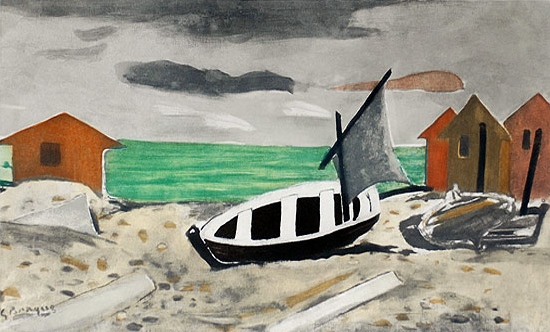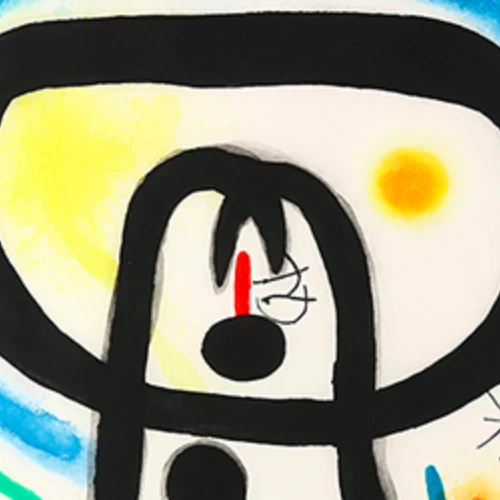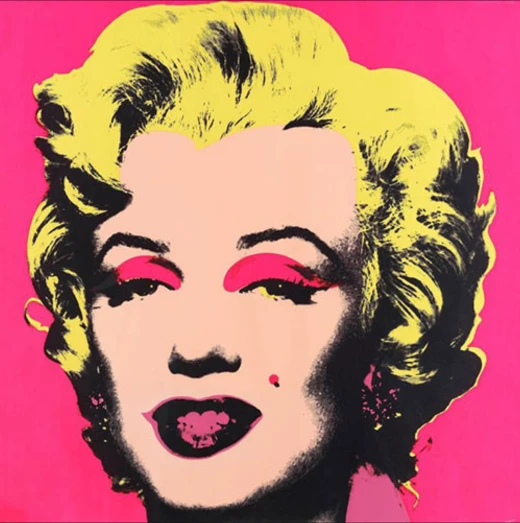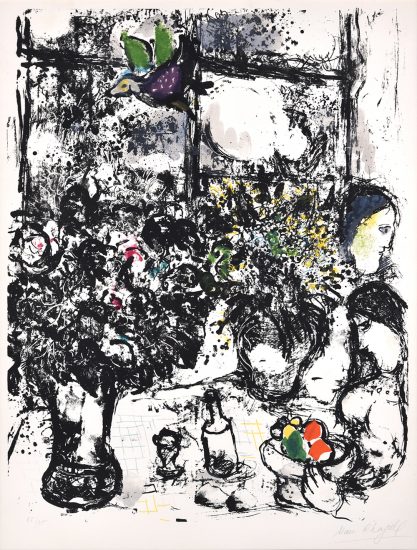Mood: Elementary
- Georges Braque
- Karel Appel
- Rene Magritte
- Joan Miro
- Pablo Picasso
LESSON PLAN: MOOD
Overview: Students will view works of art that convey a distinct sense of mood. They will learn how line and color affect the impression that we get from a work of art, affecting our mood. Students will then create drawings expressing a certain mood using what they have learned about line and color.
Age Group: Grades 1 – 5
State Standards:
Visual Arts
Standard 1: Students perceive and respond to works of art, objects in nature, events, and the environment. They also use the vocabulary of the visual arts to express their observations.
Standard 2: Students apply artistic processes and skills, using a variety of media to communicate meaning and intent in original works of art.
Standard 3: Students analyze the role and development of the visual arts in past and present cultures throughout the world, noting human diversity as it relates to the visual arts and artists.
Length of Lesson:
One 90-120 minute lesson
Objectives:
Students will be able to:
- Define the following terms: color, line, mood
- Analyze a work of art in terms of the artist’s use of these elements
- Explain how a work of art makes them feel based on the visual imagery conveyed
- Relate cultural influences and historical elements to the artwork that they view
- Create drawings based on a certain mood using color and line
Materials:
- 3-6 examples of artwork that convey a distinct mood
- Paper
- Markers/crayons/pencils
Lesson:
- Define the term “mood” and explain how art can make us feel a certain way/express a certain mood.
- Define the terms color and line
- Discuss different colors and what moods we associate with them
- Show the following 5 works:
- Georges Braque (1882-1963), The Boat, c. 1960
- French artist; created many landscapes with boats on a shore
- Karel Appel (1921-2006), Untitled, 1977
- Dutch artist known for his spontaneous (in the moment) use of bold colors
- Rene Magritte (1898 – 1967), The Voice of Blood, 1959
- Belgian artist who created images that look like something from a dream; took objects from everyday life and rearranged them in new and interesting ways
- Joan Miró (1893-1983), Cartones, 1965
- Spanish artist who also created dreamlike images; more abstract (does not necessarily look like something we recognize from our everyday lives) than Magritte; his art encourages us to use our imaginations
- Pablo Picasso (1881-1973), The Youth Dancers, 1961
- Spanish artist (often considered one of the most famous artists of all time); his style was always changing; skilled at expressing a distinct emotion/mood with simplicity of form or line
- For each work, have the students express what they see, asking questions such as the following:
- What is going on in this work?
- What do you see that makes you think that?
- What colors do you see in this work?
- How does this work make you feel/what mood does it express?
- Why do you think this work makes you feel this way? (color? line?)
- Do you like this work? Why or why not?
- Draw a few lines on the board and ask what mood they convey. Have students draw different types of lines on the board and ask what mood they convey ie. angry line, sleepy line, etc.
- Keep a word bank in mind for different types of moods (examples: happy, sad, good, bad, calm, mad, silly, scared, curious, tired, hopeful, lonely, cold, warm, afraid, angry, joyful, relaxed, excited); use these to assist in guiding the discussion.
- Focus on Braque’s Boat. Have the students draw a similar landscape with the shore, water, and boat. Have them pick a mood and try to convey that mood based on their use of color and line.
| IMAGE |
ARTIST |
TITLE |
|
|
Georges Braque | The Boat |
|
|
Karel Appel | Untitled |
 |
Rene Magritte | The Voice of Blood |
|
|
Joan Miró | Cartons |
 |
Pablo Picasso | The Youth Dancers |









